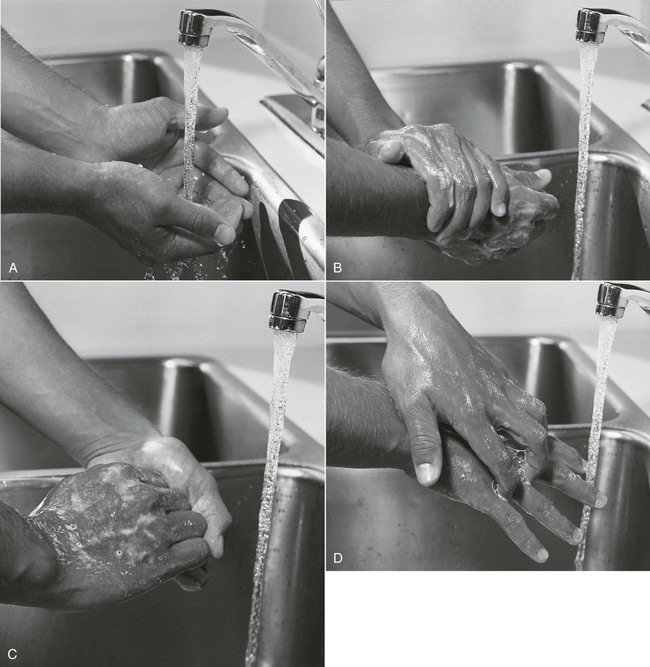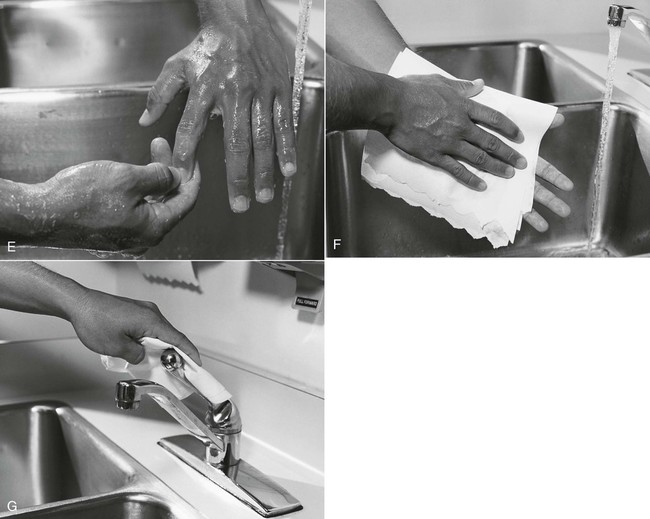1. Identify the importance of infection prevention. 2. Identify how infection can be spread. 3. Perform proper techniques used to reduce the risk of transmission of infection in the health care setting. 4. Identify infection-prevention strategies. 5. Define disinfection and sterilization. 6. Utilize procedures in equipment handling to help reduce infection. To facilitate reduction of these infections, respiratory therapists (RTs) must participate in transmission reduction education and practice prevention control strategies to not only protect their patients but also defend themselves against infection. As an RT, you will play an important role in the prevention of these infections. Box 4-1 lists the infection prevention strategies that you should follow. This chapter will focus on understanding how infection is spread and what techniques are used to help prevent its spread. Hand hygiene should be performed before and after every patient contact. The following is the step-by-step process for proper hand hygiene. 1. Inspect forearms, hands, and fingers for cuts, abrasions, or breaks in skin. 2. Inspect nails for length and condition. 3. Remove jewelry and watch, or push watch and clothing above wrist area. 4. Perform hand antisepsis using an instant alcohol waterless antiseptic product: a. Dispense a proper amount of the product on the palm of the hand. b. Rub hands together, covering all surfaces of the hands and fingers with the antiseptic product. c. Rub hands together until the antiseptic product is dry. 5. Perform hand hygiene with antimicrobial soap and warm water (Figure 4-1): a. Stand at the sink without touching the sink with hands, body, or clothing. b. Turn on water; avoid splashing. c. Regulate the flow and temperature of water. d. Wet hands and wrists with water. e. Apply antimicrobial soap to the palm of the hand. f. Lather hands by applying friction to skin surfaces for no less than 15 seconds. g. Interlace fingers and rub palms and backs of hands using a circular motion. i. Rinse thoroughly, keeping hands below elbow level. j. Dry hands thoroughly, drying from fingers up to wrist and forearms. k. Turn off the faucet with a paper towel or pedal to avoid contamination. l. Discard paper towel(s) properly. 6. Avoid opening doors or touching objects with clean hands.
Principles of Infection Control
» Skill Check Lists
4-1 Hand Hygiene
Implementation

























 inch.
inch.

